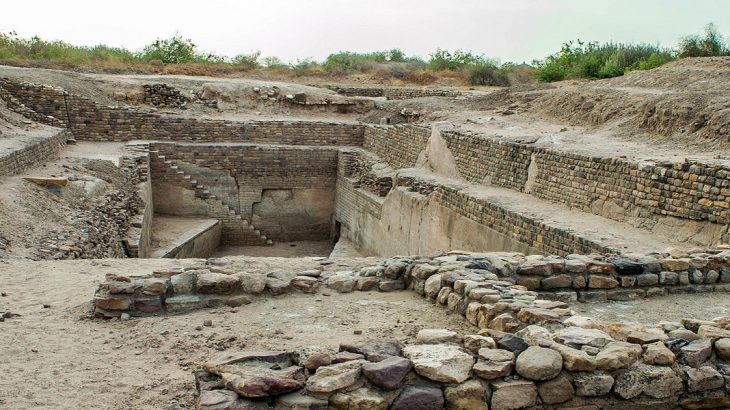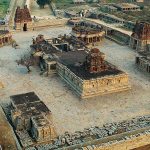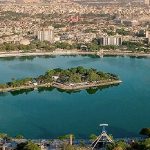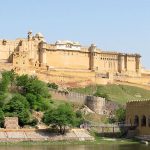Dholavira, an archaeological site of a Harappan-era city, received the UNESCO world heritage site tag on 27th July 2021. It became the fourth UNESCO site from Gujarat and 40th from India to make the list. Located at Khadir Bet in the Kutch district of Gujarat, Dholavira is the larger of the two most remarkable excavations of the Indus Valley Civilisation after Rakhigarhi. Found in 1967 and excavated in 1989-90 for the first time, the ancient city of Dholavira is one of the most remarkable and well-preserved urban settlements in South Asia dating from the 3rd to mid-2nd millennium BCE. This ancient site is known for its unique characteristics, such as its water management system, multi-layered defensive mechanisms, extensive use of stone in construction, and special burial structures. Managed by the Archaeological Survey of India, it is the most prominent archaeological site in India belonging to the Indus Valley Civilization and among the must-include places in Kutch tour packages.
1. Belongs to the Harappan Era
Dholavira is an archaeological site of immense importance in India as it is associated with the Indus Valley Civilization. It represents the ruins of an ancient city of the Harappan civilization that was inhabited over 1,200 years from 3000 BCE (pre‐Harappan) through 1800 BCE (early part of the Late Harappan period). It provides an idea of the way of life of people of the Indus Valley Civilization 5,000 years ago.
Book Here : Gujarat Tour Packages
2. Discovered in 1967
The ancient city of Dholavira was unearthed by the Archeological Survey of India (ASI) in 1967 but has been systematically excavated only since 1990. Locally called Kotada, the site is located about 500 m north of the Dholavira village on the Khadir Island in Rann of Kutch. The site is part of the protected Kutch Desert Wildlife Sanctuary. The site’s excavation between 1990 and 2005 under the supervision of archaeologist RS. Bisht uncovered the ancient city, which was a commercial and manufacturing hub for about 1,500 years before its decline and eventual ruin in 1500 BC. A range of artifacts, including terracotta pottery, beads, gold and copper ornaments, seals, fish hooks, animal figurines, tools, urns, etc. found at this site indicate trade links with lands as far away as Mesopotamia.
Must Read : Popular Heritage Sites in India
3. The Largest Indus Valley Civilization Site in India
Sprawls over an area of 250 acres, Dholavira is the largest of the two most remarkable excavations of the Indus Valley Civilization or Harappan culture in India, the other being Rakhigarhi, Haryana. Dholavira is the fifth largest site of the Indus Valley Civilization in the sub-continent. The excavated site of Dholavira demonstrates the ingenuity of the Harappan people to evolve a highly organized system of town planning based on the grid system. Dholavira is one of the most popular places to visit in Rann of Kutch.
4. Highly Organized System of Town Planning
The Indus Valley Civilization, also known as the Harappan Civilization, is famous for its systematic town planning with perfect proportions, interrelation of functional areas, street patterns, and efficient water conservation system. Lies between two seasonal streams, the Mansar in the north and Manhar in the south, Dholavira, among the top places to visit as part of Ahmedabad 3 day tour, had three distinct zones-the Upper, Middle, and Lower Towns. The expansive water management system designed to store every drop of water available shows the ingenuity of the people to survive against the rapid geo-climatic transformations. Often considered as one of the world’s earliest water conservation systems, the water system of Dholavira was very well planned with 16 reservoirs and water channels that stored water or diverted water from nearby rivulets. Step wells leading to large public baths have also been discovered here.
Book Here : Ahmedabad Tour
5. Temporarily Abandoned Site
According to the official site of Gujarat Tourism, the settlers of Dholavira abandoned their settlements who later returned to establish a de-urbanized culture. It further adds that the settlers willingly chose to simplify their lives, rather than trying to ride the collapse of their once glorified civilization. The excavation also shows signs of temporary desertion of the site. Settlers returned to the site in the late Harappan stage, with a change in their pottery. Dholavira entered a phase of severe aridity due to climate change and rivers like Saraswati drying up. Because of a drought-like situation, people started migrating toward the Ganges valley or towards south Gujarat and further beyond in Maharashtra. Its decline also coincided with the collapse of Mesopotamia, indicating the integration of economies. Harappans, who were maritime people, lost a huge market, affecting the local mining, manufacturing, marketing, and export businesses once Mesopotamia fell.
Book Here : Ahmedabad tour from Rajkot
6. Fourth UNESCO World Heritage Site in Gujarat
Dholavira, the most spectacular Indus Valley site in India, became the fourth UNESCO World Heritage Site in Gujarat, after Champaner near Pavagadh, Rani ki Vav in Patan, and the historical city of Ahmedabad. The site had been on UNESCO’s tentative list since 2014 and India had submitted its dossier in January 2020. Dholavira earned the coveted Unesco World Heritage Site tag on 27th July 2021 during the ongoing 44th session of the World Heritage Committee of UNESCO. It became the fourth UNESCO site from Gujarat and 40th from India to make the list. Also, it is the first site of the ancient Indus Valley Civilisation (IVC) in India to get the tag.
Book Here : Ahmedabad Tour from Surat





























